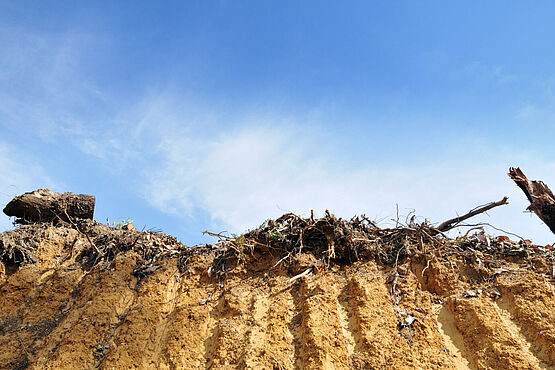Analysis of Per- and polyfluoroalkyl substances (PFAS) in soils
PFAS comprise a broad group of over seven million persistent synthetic chemicals. They are used in industrial products and consumer goods because of their non-stick, waterproofing and heat-resistant properties.

Today, these perfluorinated compounds are widespread in the environment, i.e. in soil, water and air. They persist there because they degrade only with great difficulty. As a result, PFAS are also present in the food chain.
Land recycling as part of site management
The initial regulatory focus was on two perfluoroalkyl acids (PFAAs), perfluorooctane sulfonic acid (PFOS) and perfluorooctanoic acid (PFOA), but attention has now widened to a much broader range of PFAS.
The persistence and mobility of some PFAS, combined with decades of widespread use in industrial processes have resulted in these contaminants being present in most environmental media across the world. The sources of PFAS in soil, such as Aqueous Film Forming Foam (AFFF), will include complex mixtures of individual PFAS constituents. PFAS prescurors will transform to generate extremely persistent PFAAs as terminal products.
Although many PFAS can be highly mobile in the environment, when released, a significant mass can remain in soils at release sites and continue to represent a source of contamination (Adamson, 2022). Soil and sediment may act as secondary sources of PFAS via leaching to groundwater and runoff to surface water. Assessment of sites impacted by PFAS require decisions to be made on the most robust, accurate and reliable data.
Soil analysis for PFAS
To detect potential perfluorinated compound pollution in soils, an analysis must be carried out in a specialized laboratory.
WESSLING, now part of ALS limited, not only has the necessary equipment, but also the expertise and experience to analyze your soil or sediment samples.
In addition to the 20 most regularly analyzed PFAS. Analysis by WESSLING, a member of ALS Limited, includes a wider range of analyzable products such as :
- Perfluoroalkyl-carboxylic acids
- Perfluoroalkyl-sulfonic acids
- Perfluorinated telomer sulfonates
- Perfluoroalkyl-sulfonic acids
- Perfluoroalkyl-carboxylic acids
- Perfluorinated sulfonamidoethanols
- Perfluorooctane-sulfoamidoacetic acids
Your dedicated contact:
- Frédéric Jeampierre
- +33 07 56 37 24 99
- frederic.jeampierre@wessling.fr



